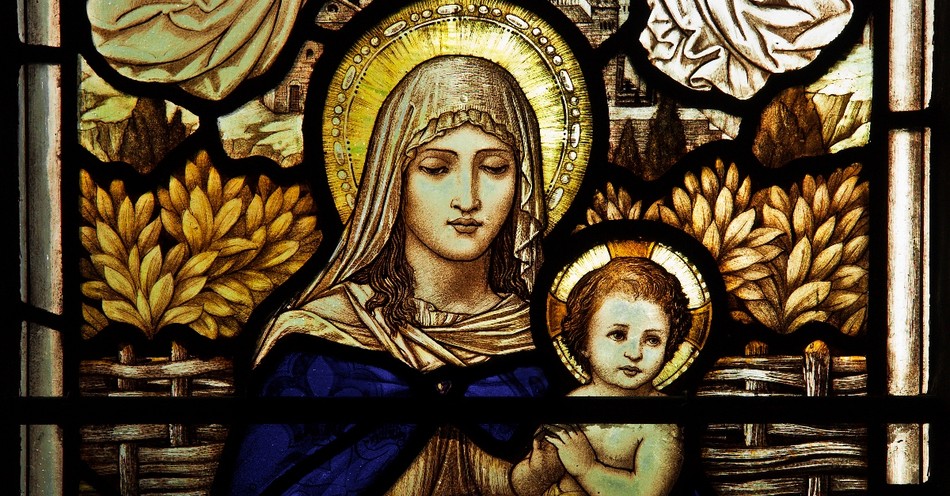Mary's Sorrows: A Framework for Understanding and Coping with Grief
Introduction: Defining Grief and the Significance of Marian Piety
Grief, a complex emotional and psychological response to loss, is a universal human experience. While the specifics vary based on individual circumstances and cultural context, the core elements – sadness, anger, guilt, and yearning – remain consistent. Attachment theory illuminates the profound impact of loss on our relational bonds, highlighting the enduring connection we maintain even after death. Furthermore, coping with grief involves navigating various stages, a process often modeled by Kübler-Ross's five stages of grief (denial, anger, bargaining, depression, acceptance), although it's important to remember that this is not a linear or universally applicable model. Within the Catholic faith, the Virgin Mary's life, marked by profound sorrow, offers a powerful framework for understanding and coping with grief. This exploration will delve into the Seven Sorrows of Mary, analyzing their theological significance and their practical application in providing solace and guidance during personal times of bereavement.
The Seven Sorrows of Mary: Theological and Psychological Dimensions
The Catholic tradition venerates the Seven Sorrows of Mary, each representing a significant moment of suffering in her life. These sorrows are not merely historical events; they offer profound theological insights into the nature of suffering, faith, and redemption. Analyzing them through the lens of vicarious trauma, we recognize that Mary’s experience of witnessing and enduring intense emotional pain offers a powerful empathy-building experience for those grappling with their own loss. The seven sorrows, explored below, provide a systematic pathway for understanding the multifaceted nature of grief and for finding meaning amidst personal suffering. The sequential nature of these sorrows facilitates a chronological understanding of the grief process, emphasizing the intertwining of pain and hope, despair and faith.
1. The Prophecy of Simeon: Anticipating Loss and Finding Faith in Uncertainty
Simeon's prophecy, foretelling a sword piercing Mary's soul, prefigures the immense suffering to come. This introduces the concept of anticipatory grief, the emotional distress experienced in anticipation of an impending loss. Through Mary's unwavering faith despite this foreboding, we learn the importance of maintaining hope and spiritual strength even in the face of foreseen adversity. This resonates with resilience theory, which posits that individuals can find strength and coping mechanisms to navigate challenging situations. Mary’s acceptance of Simeon's prophecy models proactive grief management, allowing for emotional preparation for future pain.
2. The Flight into Egypt: Navigating Trauma and Finding Security in Divine Providence
The flight into Egypt highlights the impact of trauma and the importance of seeking refuge and safety. This episode exemplifies the effects of displacement and the disruption of security. However, Mary's reliance on God's providence demonstrates the power of faith in overcoming adversity. This aligns with the concepts of post-traumatic growth, where individuals find strength and positive transformation after experiencing significant trauma, and the protective effects of secure attachment, demonstrating that even in the most challenging situations, faith and trust in God's plan can foster a sense of security and hope.
3. The Loss of the Child Jesus in the Temple: Confronting Separation Anxiety and Trusting God's Guidance
Mary’s anguish at losing Jesus in the Temple illustrates the intense emotional experience of separation anxiety and the overwhelming fear associated with potential loss. This emphasizes the importance of accepting vulnerability and trusting in divine providence. This resonates with the concepts of the stages of grief where the intensity of feelings can cause intense worry and fear. The eventual reunion demonstrates the importance of trust and faith, illustrating that even in moments of despair, divine guidance can lead to reconciliation and renewed hope.
4. Mary's Encounter with Jesus on the Way to Calvary: Experiencing Empathetic Sorrow and the Power of Shared Suffering
Witnessing Jesus' suffering on the road to Calvary represents an experience of empathetic sorrow and profound emotional pain. This sorrow exemplifies vicarious traumatization, where witnessing the trauma of another person deeply affects the observer. However, Mary's presence alongside Jesus underscores the power of shared suffering and the strength found in mutual support during moments of extreme hardship. This demonstrates that shared experiences can foster resilience and strengthen interpersonal bonds.
5. The Crucifixion: Confronting the Ultimate Loss and Finding Meaning in Sacrifice
The crucifixion represents the ultimate loss and the profound grief associated with witnessing the death of a loved one. This experience demonstrates the capacity for human resilience in the face of immeasurable pain. Through Mary's unwavering faith and acceptance, we see the process of finding meaning in sacrifice. This aligns with the concept of meaning-making, whereby individuals find ways to reconcile with and interpret traumatic events to foster growth and healing.
6. The Deposition from the Cross: Processing Loss and Embracing the Act of Tenderness
The deposition from the cross emphasizes the visceral nature of grief and the importance of acknowledging the physicality of loss. Mary's act of holding Jesus' lifeless body underscores the need for physical and emotional release. This allows for the cathartic expression of grief and the acceptance of the reality of death. This resonates with therapeutic approaches that emphasize the importance of rituals and physical actions in the grieving process.
7. The Burial of Jesus: Accepting the Finality of Death and Embracing Hope for Resurrection
The burial of Jesus represents the final stage of acceptance and the transition from grief to hope. Mary's faith in the resurrection demonstrates the spiritual resilience that allows individuals to move forward and find peace despite the loss. This connects with the concept of spiritual resilience, which highlights the role of spiritual beliefs and practices in fostering hope and coping with adversity. The burial marks the end of one chapter and the anticipation of a new beginning, fostering hope for the future.
Finding Solace and Strength Through Mary's Example
Mary's journey of sorrow offers a profound model for navigating grief. Her unwavering faith, resilience, and compassionate empathy provide comfort and guidance to those experiencing loss. By exploring her sorrows, we gain valuable insights into the multifaceted nature of grief and discover strategies for finding meaning, hope, and strength during challenging times. Her example emphasizes the importance of faith, community support, and acceptance in fostering healing and personal growth.
Conclusion: Recommendations and Future Research
Mary’s example provides a powerful lens for understanding and navigating grief within a spiritual framework. Further research could explore the effectiveness of incorporating Marian devotion into grief counseling, analyzing its impact on emotional well-being and spiritual resilience among bereaved individuals. The study could utilize qualitative methods, such as interviews and thematic analysis, to capture the lived experiences of individuals who find solace in Mary's example. This research could contribute to the development of culturally sensitive and spiritually informed grief support interventions, particularly within Catholic communities. The findings could inform pastoral care practices and provide valuable insights into the intersection of faith, spirituality, and psychological well-being in the grieving process.
Reader Pool: How might a deeper understanding of Mary's sorrows, framed within established psychological and theological frameworks, enhance our approaches to grief counseling and pastoral care?






